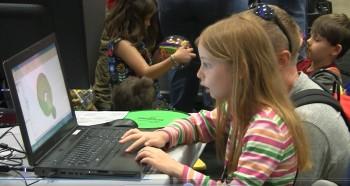
To help with this, the global leader in engineering software, ANSYS, has recently announced new academic software options for both SpaceClaim and ANSYS Aim. The STEM-driven initiative, which was announced by ANSYS’ academic program manager Paul Lethbridge at the USA Science and Engineering Festival (USASEF), will aim to provide educational editions of these two software programs for universities and K-12 classrooms. Along with the simplified versions of their popular software, the ANSYS initiative will also offer massive open online courses (MOOC) on CAE software, which will be operated by the prestigious Ithaca, New York-based Cornell University.
The focus of the STEM initiative is on SpaceClaim, their CAD modeler, as well as ANSYS Aim, which is their simulation platform that utilizes the CAD modeler on the front end. In just a matter of minutes, students were already to grasp the concept of their previously complex software, giving them an accurate feel for the work that engineers do. Getting these students accustomed to their simulation software, ANSYS hopes, will help them gain skills that will be extremely useful later on down the road. For instance, ANSYS is looking to provide high school students with a strong foundation of 3D concepts, which will better prepare them for a more in-depth look at the fundamentals of simulation and engineering principles once they move into higher education.
“They will understand 3D concepts, how things fit together and the effects of tolerancing,” said Lethbridge. “The SpaceClaim product plugs into 3D printing technology which is popular in middle and high schools. They are learning about maker spaces and additive manufacturing, but the software is the front end of that. It allows them to visualize, be creative and build things with no boundaries.”
Still, there are challenges beyond making their software readily available and accessible for the K-12 classrooms, particularly when it comes to providing the proper training and support alongside the software. To avoid the potential of having their software become “shelf-ware,” ANSYS is providing a number of supplementary resources to accompany their academic software, including online tutorials, customer portal, advanced training material, and technical support. In addition, ANSYS will also collaborate with professors to embed their simulation software into their courses, curriculum, and textbooks. Beyond the high school classrooms, ANSYS is planning to expand into middle schools and student competitions such as FIRST Robotics.